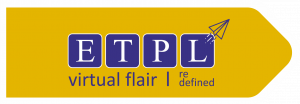Education has undergone a major shift, with hybrid learning becoming a common approach in many institutions. This model, which blends online, and in-person classes, offers flexibility to students and educators. However, managing both formats efficiently can be challenging. A college management system play a crucial role in ensuring seamless operations, making hybrid learning more effective.
The Rise of Hybrid Learning
Hybrid learning has gained momentum due to its ability to cater to different learning styles. While some students prefer face-to-face interactions, others benefit from virtual resources. The pandemic accelerated the adoption of this approach, and many colleges continue to embrace it due to its numerous advantages.
Institutions that invest in digital infrastructure are better equipped to handle this transition. A college management system simplifies administrative tasks, tracks student performance, and ensures smooth communication between faculty and students.
Challenges Faced by Institutions in Hybrid Learning
Despite its benefits, hybrid learning presents several challenges that institutions must overcome to ensure a seamless educational experience:
Difficulty in Tracking Student Attendance and Engagement
Monitoring student participation in both online and offline settings can be challenging. In virtual classes, students may log in without actively participating, making it hard to assess their engagement. Traditional attendance tracking methods may not be effective for hybrid setups, requiring institutions to implement digital attendance systems integrated with learning management platforms.
Issues in Scheduling and Managing Online and Offline Classes
Coordinating class schedules for both in-person and remote learners can be complex. Institutions must ensure that class timings, resources, and faculty availability align without conflicts. Additionally, managing time zones for remote students and ensuring equal access to learning materials further complicates scheduling.
Lack of Proper Coordination Between Faculty Members
Hybrid learning requires seamless collaboration among faculty members to ensure curriculum consistency. However, communication gaps can arise when different instructors handle online and offline components separately. Without a centralized system for lesson planning, assessment, and resource sharing, students may experience inconsistencies in their learning experience.
Data Management Concerns Related to Student Records and Assignments
Handling student data across multiple platforms increases the risk of mismanagement, duplication, or loss of critical information. Institutions need robust systems for secure storage, retrieval, and analysis of student performance, attendance, and assignment submissions. Additionally, ensuring compliance with data privacy regulations adds another layer of complexity.
How a College Management System Supports Hybrid Learning
A college management system helps colleges handle both online and offline learning smoothly by automating important tasks. It creates a single platform where students, teachers, and administrators can easily connect, communicate, and manage academic activities.
Here’s how it supports hybrid learning:
Automated Attendance Tracking:
The system makes it easy to track attendance for both in-person and online classes. Online attendance is recorded automatically through integrated video conferencing tools, while offline attendance can be marked using biometric scanners or RFID technology. This saves time, reduces errors, and provides real-time attendance reports for teachers and administrators.
Leran More: Top 10 Features of College ERP Software
Efficient Course Management:
Teachers can easily create and manage courses, upload study materials, and assign homework—all in one place. Students can access these materials anytime, ensuring they stay on track with their studies. The system also helps schedule online and offline classes, making learning smooth and organized.
Seamless Communication:
Keeping students, teachers, and parents updated is crucial in hybrid learning. The system sends automatic notifications via email, SMS, or app alerts about class schedules, assignments, exams, and other important updates. This reduces confusion and ensures everyone stays informed.
Data Security and Management:
All student records, grades, and academic progress are stored securely in a centralized system. Role-based access ensures that only authorized staff can view or update the data. Cloud storage also keeps information safe and accessible from anywhere, preventing data loss and unauthorized access.
Key Features That Improve Hybrid Learning
A good college management system includes features that make hybrid learning smooth and effective:
Easy Access to Learning Materials
A learning management system (LMS) helps students access online course materials, recorded lectures, and other study resources anytime. This allows them to review lessons at their own pace. It also includes discussion forums and assignment submission tools, making learning more interactive and engaging.
Simple Virtual Class Scheduling
Hybrid learning requires a well-planned schedule for both online and offline classes. A college management system makes it easy for faculty to create and update class timetables. Students receive automatic reminders about upcoming sessions, ensuring they stay on track. It also integrates with video conferencing tools for smooth online classes.
Tracking Student Progress
Keeping track of student performance is important in a hybrid learning setup. The system provides detailed reports on attendance, assignments, and exams. This helps teachers identify students who may need extra support. Students can also check their own progress, allowing them to focus on areas that need improvement.
Online Exams and Automated Grading
The system allows online exams with different types of questions like multiple-choice, short answers, and essays. Automated grading saves time for teachers and ensures accurate results. Students also receive instant feedback, helping them understand mistakes and improve their performance. Secure tools like plagiarism detection and online proctoring maintain exam integrity.
Access from Anywhere
A cloud-based system ensures that students and faculty can access study materials, grades, and other important information from any location. This makes learning flexible and convenient, even in cases of campus closures or travel restrictions. Everything is securely stored online, allowing smooth collaboration between teachers and students.
Future of Hybrid Learning
With advancements in technology, hybrid learning is expected to evolve further. Artificial intelligence, data analytics, and smart learning tools will enhance personalized learning experiences. Institutions that leverage college management software will find it easier to adapt to these changes and offer a seamless educational experience.
The demand for flexibility in education is growing, and hybrid learning is likely to remain a long-term solution. Colleges that embrace technology will be better positioned to meet student expectations and improve academic outcomes.
Hybrid learning is no longer a temporary solution—it is becoming a permanent part of education. To ensure its success, institutions must invest in the right tools. A college management system provides the necessary support by streamlining processes, improving communication, and enhancing student engagement. As education continues to evolve, having a reliable system in place will be essential for managing hybrid learning effectively.
FAQs
1. How does a College Management System help students and teachers?
It makes tasks like attendance, scheduling, and assignments easier. Teachers can track student progress, and communication becomes smoother for everyone.
2. How does a College Management System support a school’s growth?
As schools grow, it helps manage more students, staff, and campuses efficiently by keeping everything organized and automated.
3. How does a College Management System reduce paper costs?
It replaces printed records with digital ones, so attendance, report cards, and assignments are all managed online, saving money on paper.
4. How much does it cost to get a College Management System?
The cost depends on the features, the number of users, and whether it’s cloud-based or installed on school servers. There may be setup, subscription, and maintenance fees.
5. How much do college spend on management software?
The price varies, but while there’s an initial cost, it helps save money in the long run by reducing manual work and paperwork.
Visit eGenius.in to explore how a college management system simplifies hybrid learning and enhances education!














